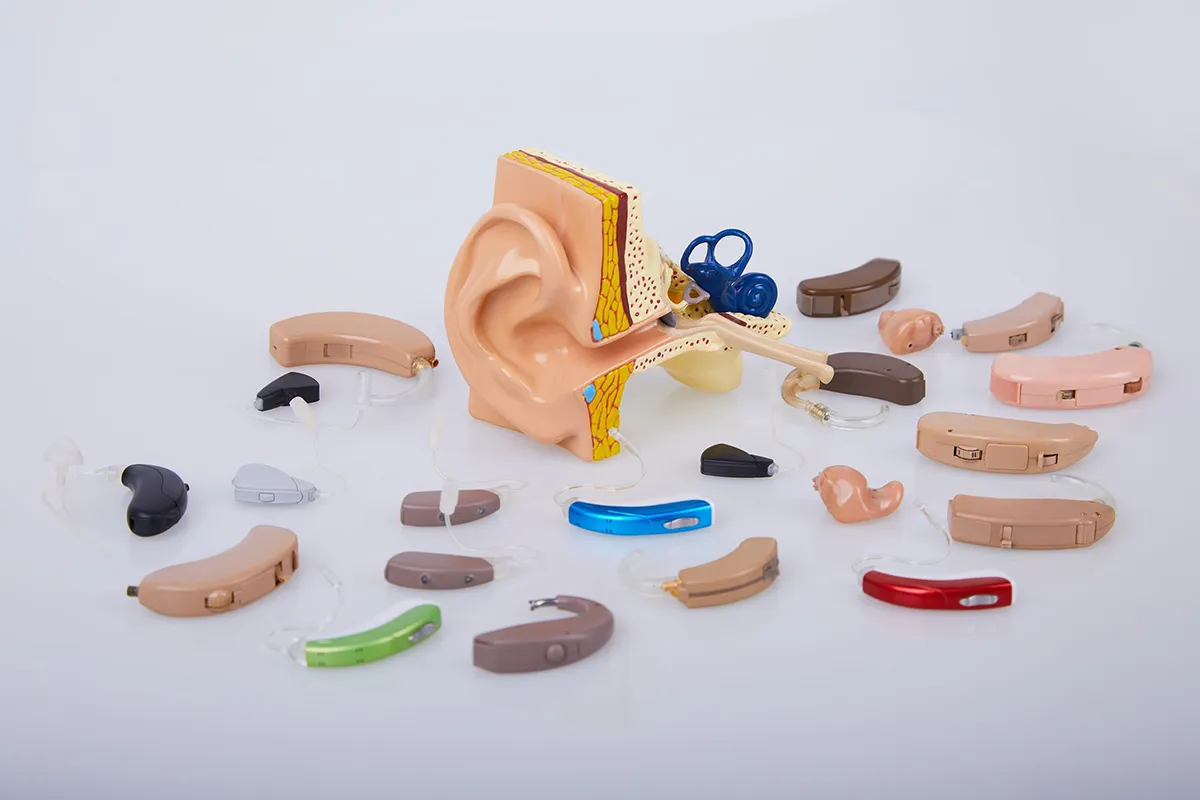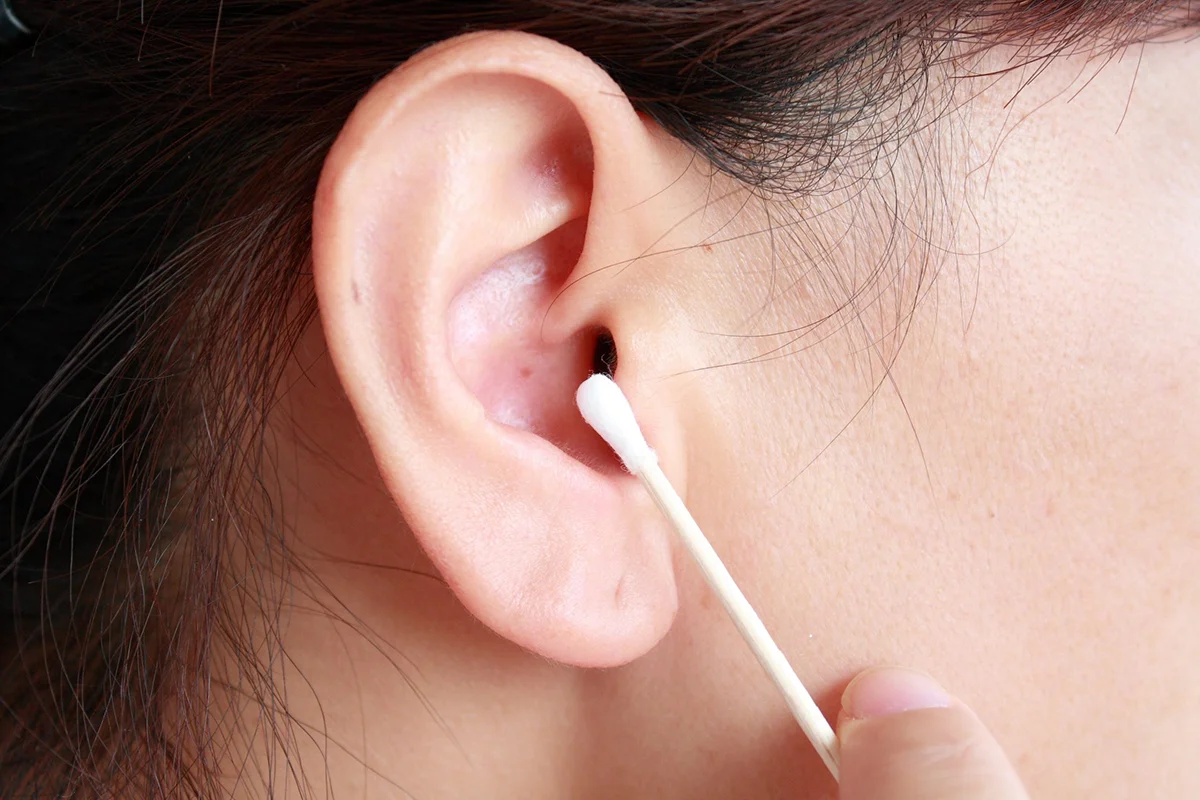By: John Phillips, Eargo Client
About one year ago, I wrote a blog that Eargo published here about the quality of my hearing life improvement with the help of the Eargo Neo HiFi devices. I can’t begin to express my excitement and anticipation when the announcement came about the release of the next generation of Eargo devices – the Eargo 5. I received my Eargo 5 units in the mail not long after their release and have been wearing them for over a month now. I boil it down to two very simple words: GAME CHANGER.
I’ve been a technologist for the better part of my adult life and I am often amazed by all the advances in technology. The Eargo 5 doesn’t just amaze me. Rather, it astounds me. I explored every facet of the Eargo Neo HiFi to ensure I was getting the maximum benefit from what that technology offered. Having now explored the Eargo 5, I can honestly say that Eargo has outdone themselves with their latest technology and it will only get better as they make further refinements.

From my perspective, here are the game changers I’ve discovered with the Eargo 5:
- Sound Match
- Feedback suppression
- Automatic volume leveling
- In-ear adjustments
- Charging ease
Sound Match
A new feature with Eargo 5 is Sound Match, which allows you to tailor your devices to your hearing preferences. First, you put the Eargo 5 units in your ear canals, and then using your smartphone, the Eargo 5 app plays various tones in each ear. You simply tap the screen to confirm if you heard the sound and from there Sound Match personalizes each device with a Normal Program and up to 3 Environmental programs to accommodate your hearing. Sound Match can be performed from the comfort and convenience of your own home, as often as you need.
When I use Sound Match I go into a bedroom closet and shut the door so I have a really quiet environment. The first time I tried Sound Match I didn’t have good results. It showed the hearing loss in my left ear as severe, and the resulting chart didn’t resemble the professional hearing test I had done a couple of years back. I found it hard to believe that the hearing in my left ear had deteriorated that drastically. Because of the high amplification in the left ear, I kept hearing a very light “flutter” in my left ear which is an artifact caused by the new feedback suppression mechanism (described in detail next section).
After a discussion with Eargo about the results from Sound Match, I found out there is a technical reason why it didn’t work well for me. I have a Motorola RAZR phone. The ultrasonic frequencies do not emit well from any Motorola phone so Sound Match is spotty. Fortunately, I also have an iPhone for work and Sound Match works well on an iPhone. Eargo says they are working on a solution to this for Motorola phone owners.
Feedback Suppression
This is one of the few complaints I have with the Eargo Neo HiFi units. My Program 4 was set to a high amplification profile. When I would cycle through my program areas, changing to Program 4 would result in howling feedback that would often last for ten seconds or more. With the Eargo 5, as soon as feedback is detected the unit immediately cuts it off.
What’s the greatest benefit of feedback suppression? Talking on your phone normally again. By now you’ve probably adapted to using your speakerphone function (yes, we love having private conversations for all to hear, don’t we?) or holding your phone away from or at an angle to your ear (this always felt unnatural and awkward to me). Those days are over with the Eargo 5. Put your phone’s speaker right up against your ear just like the good old days. Feedback suppression kicks in and you can have a normal phone conversation again.
Automatic Volume Leveling
Eargo really thought this one through. That howling feedback I would receive when changing to Program 4 was actually kind of painful because it was so loud from being so close to my eardrum. I was concerned that this could further damage my hearing. The Eargo 5 still has 4 program areas, but when you switch from one program to another the units automatically bring the volume level down on the switch, then gradually bring the volume level back up. This is brilliant.
The units are also smart enough to detect when there’s a potentially harmful (loud or shrill) external sound and will automatically lower the volume in your ears to prevent hearing damage that may occur if experienced repeatedly over time. All I can say is, “thank you Eargo.”
In-ear Adjustments
With the Eargo Neo HiFi, you couldn’t make any adjustments to the devices unless the units were in the charger and the charger was connected via Bluetooth to your phone.
That has changed with the Eargo 5. I can tweak the treble, bass, and volume level, and increase or decrease the noise filter levels dynamically with the Eargo 5 app while the units are still in my ears. That’s incredibly convenient! But as a technologist that also had me completely baffled.
Think back to Sound Match. How was the app communicating with the units while they were in my ears to emit various independent tones? Same question regarding the tweaks. The units don’t have Bluetooth built in, so how were they able to be controlled from the phone app?
Eargo explained that to me and now it makes sense. The Eargo 5 units can detect ultrasonic sounds. Ultrasonic sounds, generally higher than 20Khz can’t be heard by humans but can by dogs. The app commands your phone to send super high-pitched sounds through its speaker. When the Eargo 5 devices detect the ultrasonic sounds, they are programmed to do things like increase/decrease volume, increase/decrease treble and bass, emit tones for Sound Match, etc.
What this means is you can have four program areas loaded with hearing profiles, and then can adjust them at will using your phone depending on the environmental conditions. Wow. Just wow.
I started playing with the treble and bass adjustments one day. I cranked up the treble and noticed all day long that when sound was detected, it briefly sounded like champagne glasses clanging together until the feedback suppression mechanism kicked in. I was talking to my wife (who has stellar hearing as most moms do) when I got home from work and she kept hearing that clanging as she was talking to me. That was really annoying her and she refused to say anything more to me (note to self … I just discovered a way to avoid having lengthy conversations with her). I told her to “hold on,” opened the app, and decreased the treble. The clanging went away. Probably saved my marriage 🙂 because I’m sure she was either going to kill me or the hearing aids, whichever she could get her hands on first.
Charging Ease
The charger for the Eargo Neo HiFi was a source of frustration for me. After carefully cleaning my devices and charger each night, most times I would have to insert and reinsert the devices into the charger several times before they were seated correctly and charging would begin. There were many mornings when I would pick up the charger and see the four red death lights on one or both sides, meaning the devices had somehow become unseated again and did not charge. This type of charging is called conductive charging and requires physical contact between the charging contacts on the charger and the battery contacts on the hearing devices.
The Eargo 5 product has been completely redesigned when it comes to charging. It uses inductive charging, sometimes called wireless charging (many cell phones can use this type of charging technology now). Rather than using metal contacts on the charger and on the hearing devices, the system has been designed to use electromagnetic induction that allows charging to take place without needing to be precisely aligned or make contact with a dock. Flip the hearing devices over and place them in the charger. You’ll feel a gentle pull of the magnets and charging starts immediately each time and every time.
Candidly, there was one aspect of the Neo HiFi charger that I like better than the Eargo 5 charger. The Neo HiFi charger had three LED lights at the bottom that indicated the battery level of the charger. Three LEDs mean full battery level and one LED means low battery level. The Eargo 5 charger doesn’t have this and I miss it. But, the charger can be left plugged in and it will not damage the batteries or diminish their charging capacity, so I just leave it plugged in all the time.
Other Observations
Here are some other things I’ve discovered or observed that are different from the Eargo Neo HiFi solution, or suggestions for improvement.
- Program switch announcements. The Neo HiFi program area switch would say, “Program 1, Program 2, etc.” With the Eargo 5, it actually announces the program name. “Normal, Meeting, Restaurant, etc.” That’s really nice.
- The charging case of the Eargo 5 is slightly smaller than the Neo HiFi and its case texture makes it slicker than the Neo HiFi. I find it slipping out of my hands more easily when picking it up with my fingers. And the charger battery life seems to be shorter with the Eargo 5. Previously I could charge up my Neo HiFi devices four or five times on a single charge. With the Eargo 5 charger, I get fewer device charges.
- The Eargo 5 devices are smaller than the Neo HiFi which makes them even more comfortable in my ears. The pull thread (the thing used to pull the device out of your ear) feels stiffer than the ones on the Neo HiFi, so at times I have a little more difficulty grabbing hold of the pigtail to pull them out.
- The UE (User Experience) of the app will improve over time. When you tweak volume, treble, bass, and noise filter level, you receive no audible feedback in your ear that the tweak was successful. It would be nice for the devices to confirm the action. For example, it would be nice to hear, “volume up” or “treble down” or “noise filter high.” Eargo says they are working on this enhancement.
- The clarity of the Eargo 5 devices is far superior to the Neo HiFi units. The sound is far more “natural” and my ability to understand speech is greatly improved. I noticed that right away.
- The Eargo 5 devices have removable microphone cap covers. That’s new. I lost one most likely while cleaning the devices at night before bed. I had no idea it had fallen off and I couldn’t find it. Fortunately, there are a couple of spares that Eargo includes with the product. I just pay a little more attention these days when I’m cleaning the devices. Replacing petals and microphone caps is a breeze with these Eargo 5 devices. Eargo clearly gave great thought to this new process.
- Changing program areas is a lot easier on the Eargo 5 than the Neo HiFi. A quick double-tap on the part of the ear that sticks out just below the temple (called the tragus) is all that’s needed. It took a few tries to find the sweet spot, but now I can change programs consistently and much more discreetly (people used to look at me funny when I slapped my ears with the Neo HiFi).
With the Neo HiFi, there were a lot of conditions that would cause the program area to change. For example, hammering a nail or riding on a motorcycle. That doesn’t happen with the Eargo 5 because it doesn’t use sound pressure as the trigger to change. That said, the Eargo 5 has spontaneously changed its program area on me a couple of times, but I haven’t been able to pinpoint why it does that periodically. Maybe someone blew a dog whistle near me?
Conclusion
Eargo knocked it out of the park with the Neo HiFi product. With the Eargo 5 product, they’ve knocked it into the stratosphere. Technically, I’m not often impressed but Eargo 5 completely impresses me. I am in awe of what Eargo has produced. As much as I loved my Neo HiFi devices, it would be impossible for me to go backward now. If you are considering upgrading to the Eargo 5, then just do it and you won’t look back. I can hardly wait to see what Eargo puts on the table next because, given my experience with the Eargo 5, I’ll be eating whatever they serve. Well done Eargo. Well done.
About the author
John Phillips is a busy guy truly living life. John works for Briggs Healthcare as a Senior Executive and specializes in information technology for the company. He also heads up the Briggs Homecare division. On the weekends he’s a guitarist and band manager for his cover band “Flash Drive” – http://www.flashdriveband.com/. John is happily married to Kay with an incredible family residing in Illinois.





